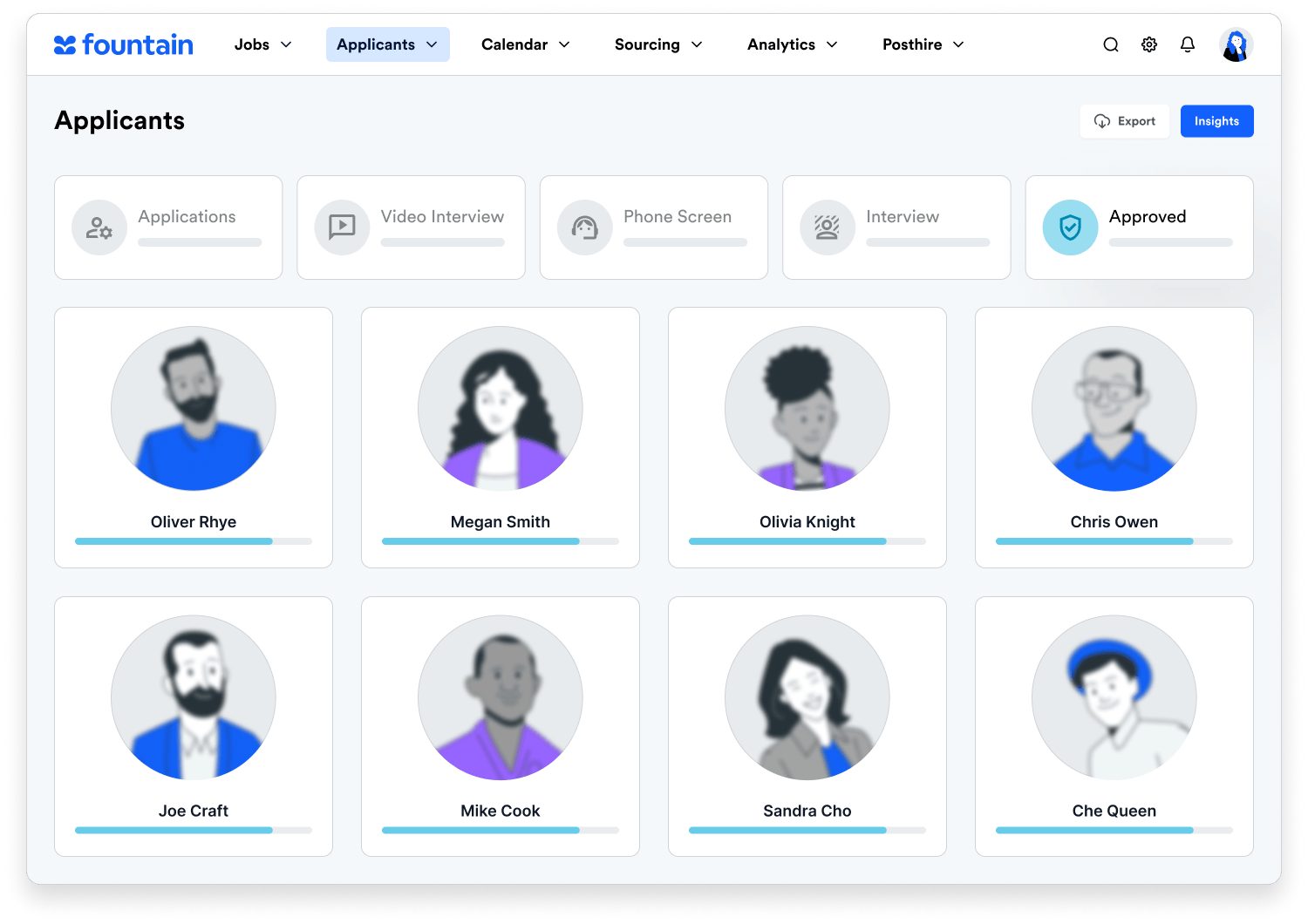With more than 2 million warehouse workers in the U.S. alone, these employees are the foundation of the global supply chain. But with the ever-changing waters of the labor market, businesses cannot afford to remain stagnant when it comes to their warehouse worker hiring strategies.
It’s more important than ever that companies think critically about tactics they can use to hire qualified talent faster to keep their warehouses and fulfillment centers running smoothly.
Keep reading for three powerful strategies companies can use to improve their warehouse worker hiring practices, inspired by our customer, Stitch Fix.
Consider Investing in Automation
It’s no secret that talent acquisition teams tend to get bogged down with manual tasks. And, when it comes to teams that focus on hiring thousands of warehouse workers, those manual tasks can get out of control as a single candidate may require dozens of action items on your team’s end.
Prior to implementing Fountain, recruiters at Stitch Fix manually screened, moved applicants forward to the next stage, and scheduled candidate interviews. This meant that the speed at which they could hire was severely limited by the size of their recruiting team. To rectify this issue, Stitch Fix began leveraging Fountain to create rules that would automatically move candidates through the hiring process.
By focusing on effective automation, Stitch Fix was able to decrease its median time-to-hire for warehouse associates from nearly three weeks to only 9.16 days!
Use Personalization to Stand Out
While automation is certainly a game changer when it comes to reducing key hiring metrics like time-to-hire, it’s easy to go a bit overboard!
Before you automate every step of your hiring process, take time to think critically about which applicant communications should be personalized versus which messages are okay to templatize.
Maybe for your hiring process, personalization is as simple as including the candidate’s name in an email or requires a heavier lift like a phone call to go over benefits and company culture. Whatever the case may be, be sure to invest in tools that allow you to automate and personalize as necessary.
Stitch Fix found that to keep candidates engaged and align their warehouse worker hiring process with their overarching brand, a fully automated recruiting process wouldn’t work for them. Fountain allowed them to quickly pivot and add a stage to their hiring process wherein candidates would speak directly with a recruiter.
Using a tool that allowed them to accelerate some tasks with automation gave them the ability to focus on one of the most impactful stages of the hiring process, which in Stitch Fix’s case is a call with a recruiter.
Trial and Error
It can be tempting to build a set-it-and-forget hiring strategy, especially once you’ve added a powerful hiring tool like Fountain to your HR stack.
Once you’ve implemented automation, be sure to keep tabs on your hiring process success metrics. Remember, you know your applicants and the needs of your business best—so if something isn’t working quite as well as you hoped, simply use Fountain’s drag-and-drop editor to remix your hiring process.
Stitch Fix experimented with different interview styles (e.g., no interviews, video interviews, onsite interviews) to find the most efficient method for both the recruiter and the candidate. Using a tool that allows you to easily refine your hiring process is key to effective warehouse worker recruitment.
If you’re interested in learning more about how Stitch Fix implemented Fountain to supercharge their hiring process, check out this case study!

